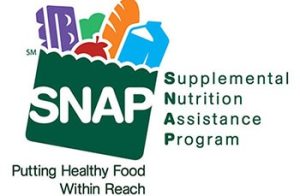Follow These Steps To Finding The Right Variety Mix ⋅ BY AMANDA HUBER ⋅ SOUTHEAST EDITOR Selecting varieties for the coming season is not an easy process. First, seed is an expensive input. Once planted, there is no changing your mind about the variety. Many factors affect this important decision and resources abound to help […]
The post Select Varieties With Confidence appeared first on Cotton Farming.
Follow These Steps To Finding The Right Variety Mix
⋅ BY AMANDA HUBER ⋅
SOUTHEAST EDITOR
Selecting varieties for the coming season is not an easy process. First, seed is an expensive input. Once planted, there is no changing your mind about the variety. Many factors affect this important decision and resources abound to help you in the process. But where do you begin?
Steve M. Brown, Alabama Cooperative Extension cotton agronomist, offers guidance on how to get started, how many varieties to select and what decisions need to be made. In the end, producers should be confident in their selections.
“When we make variety choices, we are deciding on agronomic potential, but we are also making investments in terms of pest management options,” Brown says. “The first fork in the road is which weed technology you are going to use: will it be Enlist or Xtend?”
This decision may depend on whether the farmer is the one doing the spraying and what equipment is available on the farm.
“Can you accommodate both technologies or will it be limited to one? Is the choice defensive? What are my neighbors planting?” he says. “Only you know your set up and situation to make the decision of variety selection.”
Start With Solid Performers
Brown suggests that 80% of the farm should be in familiar varieties that are solid performers.
“The goal is to make cotton, but we also don’t want to put all our eggs in one basket. Reserve a portion of acres to explore new varieties and maybe even new technologies.”
This is where producers can diversify. Variety choices can be made based on planting date, genetics, maturity or other factors.
“In the lower Southeast, stress tolerance and endurance are more valuable traits than maturity,” he says.
Use Data To Find New Varieties
Auburn University has partnered with Medius Ag to create a variety selection tool for cotton and peanuts.
“The end result is not just a tool, but a toolbox with multiple tools that will allow users to look at small plot variety trial data and large plot on-farm data in one location,” says Henry Jordan, AU variety testing manager.
The platform allows users to search for varieties based on various criteria. You can view individual or multiple trials at once, and data can be averaged and compared across locations and years. Varieties can also be compared side by side.
“Analytics is a powerful tool that helps users visually evaluate the data, and the data center, a tool available to users that create a login, allows users to build charts and tables with the data,” Jordan says.
Know Your Boundaries
Study the data and look at what’s rising to the top in terms of performance, Brown says. “Look within your technology boundaries and compare several years. Consider the agronomic factors — seedling vigor, plant growth regulator management, ease of defoliation and harvest.”
Browns says to look at the data, and also factor in experience to guide variety selection.
“Experience is valuable in this process as well,” he says. “The more local, the better. Custom harvesters have a lot of local knowledge and experience with varieties in different situations. Gins are also a possible source of information about fiber quality if farmers regularly report what varieties they are delivering in their modules.
“Certainly, consider pest results on your own farm, and you probably will have some brand considerations and loyalties. It’s all about confidence that I’ve got a good mix that will produce good yield in a normal crop year. I use the data to make new entries,” Brown says.
Neighboring States’ Data
If you farm near the state line or a neighboring state’s research station has soils similar to that on your farm, then study data from that state as well. Such is the case for producers in the Panhandle of Florida or southern Alabama and Georgia.
Libbie Johnson, Extension agent for field crops in Escambia County, Florida, says producers across the Panhandle have the option to look at Florida, Alabama and even Georgia’s data to make their variety selections.
“To aid in your decision making, there’s 2021 cotton trials completed across the Panhandle. Also look at Auburn’s information from Brewton, Fairhope and the Wiregrass. The University of Georgia does many trials across the state both on dryland and irrigated,” Johnson says.
In the end, Brown says it’s good to settle on three to five varieties. “The AU Variety Selection Platform is a tool that takes time to figure out how to use proficiently, but that time and effort will be rewarded with a wealth of information.”





